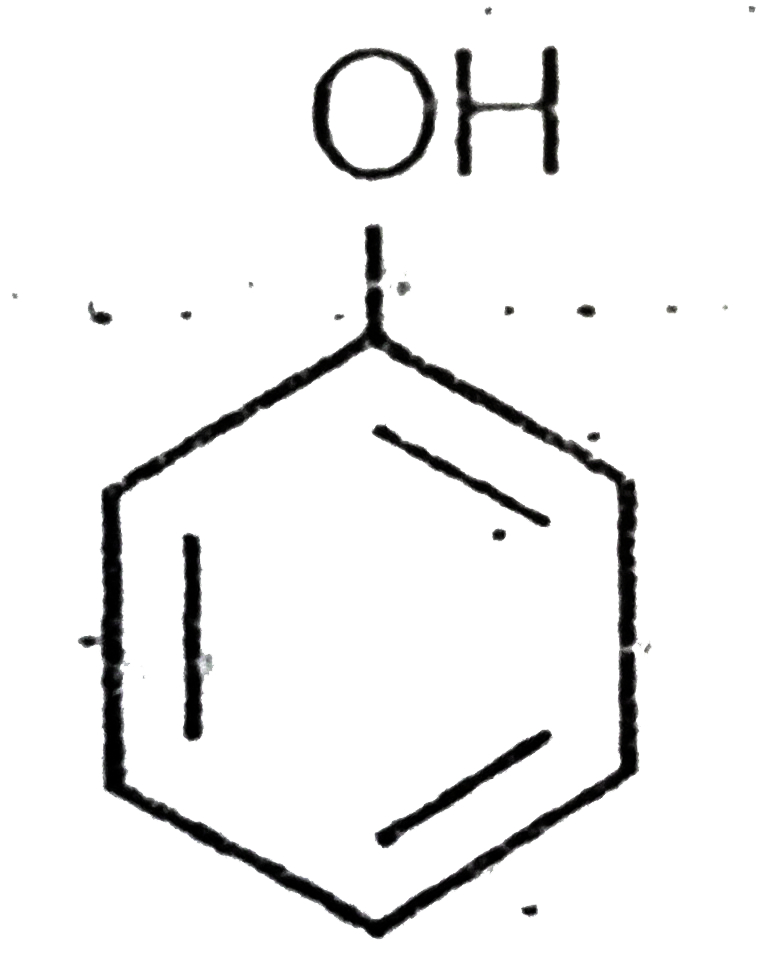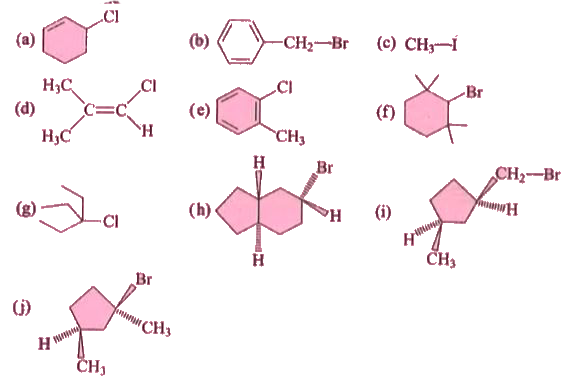The compounds which cannot react with NaOH is/are
(a) CH3−C≡CH
(b) NH3
(c) C2H5OH
(d) 
The correct Answer is:A, B, C, D
To determine which compound cannot react with NaOH, we need to analyze the acidity of the compounds provided. NaOH is a strong base and typically reacts with acidic compounds by deprotonating them to form their conjugate bases. Let's evaluate each option step by step.
Step 1: Analyze Compound A (e.g., Alkyne)
- Structure: Let's assume compound A is an alkyne, such as CH≡C-CH3.
- Reaction with NaOH: The most acidic hydrogen is the one attached to the terminal carbon of the alkyne. When NaOH is added, it can remove this hydrogen, forming a stable conjugate base (CH≡C-).
- Conclusion: Compound A can react with NaOH.
Hint: Look for the most acidic hydrogen in the compound and consider the stability of the resulting conjugate base.
Step 2: Analyze Compound B (e.g., Ammonia, NH3)
- Structure: NH3 (Ammonia).
- Reaction with NaOH: When NH3 reacts with NaOH, it can lose a hydrogen ion (H+) to form NH2-. However, NH2- is not a stable anion compared to other conjugate bases.
- Conclusion: Compound B (NH3) does not react with NaOH effectively because it does not want to lose its H+ ion.
Hint: Consider the stability of the conjugate base formed after deprotonation.
Step 3: Analyze Compound C (e.g., Ethanol, C2H5OH)
- Structure: C2H5OH (Ethanol).
- Reaction with NaOH: Ethanol has an acidic hydrogen on the hydroxyl group. When NaOH is added, it can remove this hydrogen, forming the ethoxide ion (C2H5O-), which is stable due to the electronegativity of oxygen.
- Conclusion: Compound C can react with NaOH.
Hint: Check if the negative charge on the conjugate base is stabilized by electronegative atoms.
Step 4: Analyze Compound D (e.g., Phenol)
- Structure: C6H5OH (Phenol).
- Reaction with NaOH: Phenol also has an acidic hydrogen on the hydroxyl group. When NaOH is added, it can remove this hydrogen, forming the phenoxide ion (C6H5O-). This anion is stabilized by resonance with the aromatic ring.
- Conclusion: Compound D can react with NaOH.
Hint: Look for resonance stabilization in the conjugate base, especially in aromatic compounds.
Final Conclusion
Based on the analysis:
- Compound A (Alkyne) reacts with NaOH.
- Compound B (Ammonia) does not react with NaOH.
- Compound C (Ethanol) reacts with NaOH.
- Compound D (Phenol) reacts with NaOH.
Thus, the compound that cannot react with NaOH is Compound B (Ammonia, NH3).
- Structure: Let's assume compound A is an alkyne, such as CH≡C-CH3.
- Reaction with NaOH: The most acidic hydrogen is the one attached to the terminal carbon of the alkyne. When NaOH is added, it can remove this hydrogen, forming a stable conjugate base (CH≡C-).
- Conclusion: Compound A can react with NaOH.
- Structure: NH3 (Ammonia).
- Reaction with NaOH: When NH3 reacts with NaOH, it can lose a hydrogen ion (H+) to form NH2-. However, NH2- is not a stable anion compared to other conjugate bases.
- Conclusion: Compound B (NH3) does not react with NaOH effectively because it does not want to lose its H+ ion.
- Structure: C2H5OH (Ethanol).
- Reaction with NaOH: Ethanol has an acidic hydrogen on the hydroxyl group. When NaOH is added, it can remove this hydrogen, forming the ethoxide ion (C2H5O-), which is stable due to the electronegativity of oxygen.
- Conclusion: Compound C can react with NaOH.
- Structure: C6H5OH (Phenol).
- Reaction with NaOH: Phenol also has an acidic hydrogen on the hydroxyl group. When NaOH is added, it can remove this hydrogen, forming the phenoxide ion (C6H5O-). This anion is stabilized by resonance with the aromatic ring.
- Conclusion: Compound D can react with NaOH.
Based on the analysis:
- Compound A (Alkyne) reacts with NaOH.
- Compound B (Ammonia) does not react with NaOH.
- Compound C (Ethanol) reacts with NaOH.
- Compound D (Phenol) reacts with NaOH.
Topper's Solved these Questions
- ORGANIC CHEMISTRY: SOME BASIC PRINCIPLE AND TECHNIQUESBOOK - AAKASH INSTITUTE ENGLISHCHAPTER - ORGANIC CHEMISTRY: SOME BASIC PRINCIPLE AND TECHNIQUESEXERCISE - SECTION-D LINKED COMPREHENSION TYPE QUESTIONS
7 Videos
- ORGANIC CHEMISTRY: SOME BASIC PRINCIPLE AND TECHNIQUESBOOK - AAKASH INSTITUTE ENGLISHCHAPTER - ORGANIC CHEMISTRY: SOME BASIC PRINCIPLE AND TECHNIQUESEXERCISE - SECTION-E ASSERTION-REASON TYPE QUESTIONS
14 Videos
- ORGANIC CHEMISTRY: SOME BASIC PRINCIPLE AND TECHNIQUESBOOK - AAKASH INSTITUTE ENGLISHCHAPTER - ORGANIC CHEMISTRY: SOME BASIC PRINCIPLE AND TECHNIQUESEXERCISE - SECTION-B OBJECTIVE TYPE QUESTION (ONE OPTION IS CORRECT)
37 Videos
- ORGANIC CHEMISTRY : SOME BASIC PRINCIPLES AND TECHNIQUES BOOK - AAKASH INSTITUTE ENGLISHCHAPTER - ORGANIC CHEMISTRY : SOME BASIC PRINCIPLES AND TECHNIQUES EXERCISE - Assignment(Section-D)(Assertion - Reason Type Questions)
15 Videos
- POLYMERSBOOK - AAKASH INSTITUTE ENGLISHCHAPTER - POLYMERSEXERCISE - ASSIGNMENT (SECTION-D)
13 Videos
Similar Questions
Knowledge Check
Which of the following compounds does not react with NaOH ?
ACH3COOHBCH3CONH2CC6H5OHDCH3CH2OH
The compound which does not react with lithium aluminium hydride is
View SolutionThe compound which will react with alkaline silver nitrate solution is
View SolutionThe compound which reacts with ozone to liberate oxygen is
View SolutionCompound which cannot act as a reducing agent is
View SolutionExamine the ten structures shown below and select those that satisfy each of the following condition.

How many compounds do not react with NaOH?
View SolutionThe compound which reacts with Fehling's solution is :
View SolutionThe pairs of compounds which cannot exist together in aquous solution are:
(I)NaH2PO4andNa2HCO3 (II)Na2CO3andNaOH
(III)NaOHandNaH2PO4 (IV)NaHCO3andNaOH
View Solution
